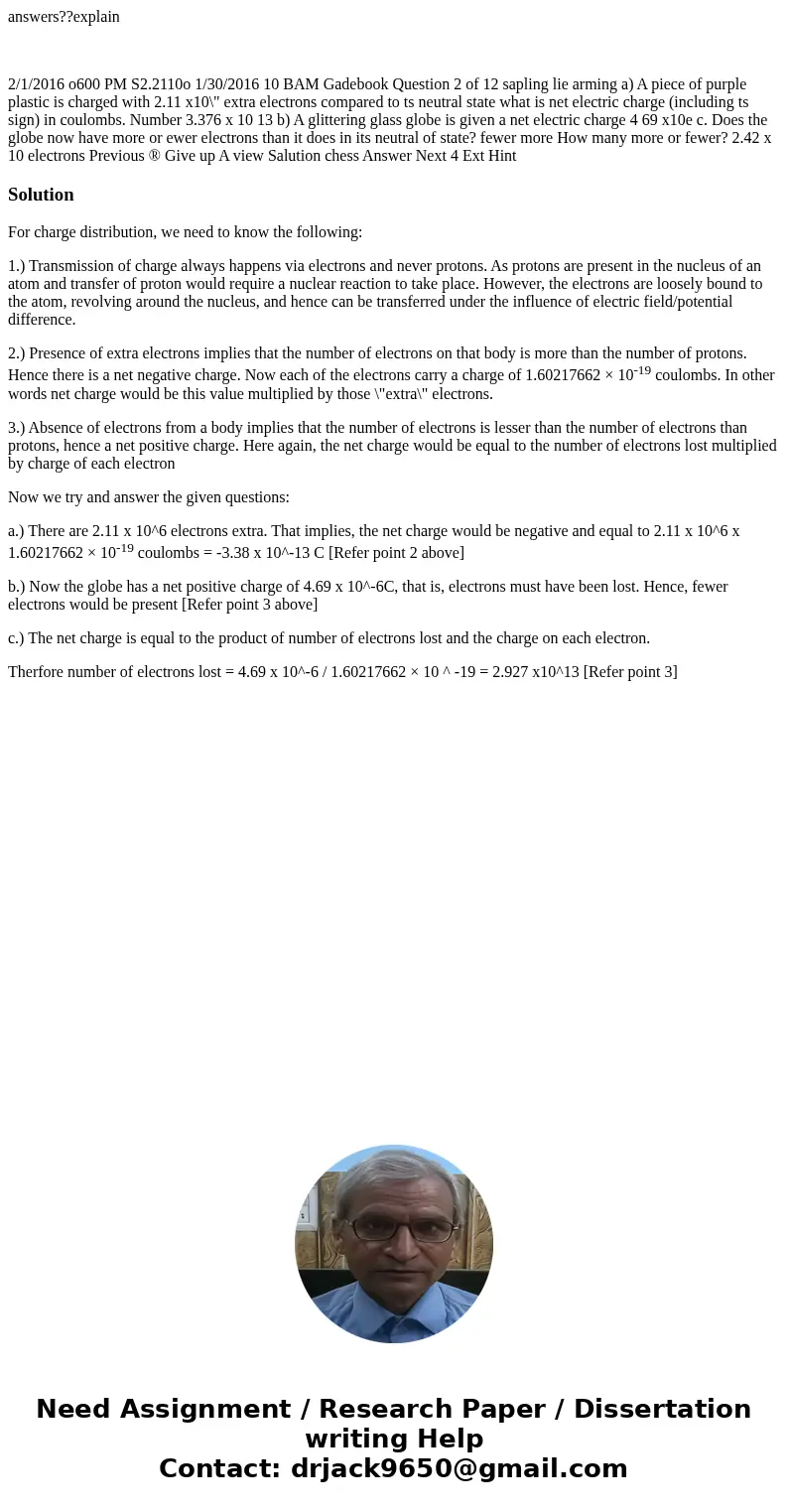answersexplain 212016 o600 PM S22110o 1302016 10 BAM Gadeboo
answers??explain
Solution
For charge distribution, we need to know the following:
1.) Transmission of charge always happens via electrons and never protons. As protons are present in the nucleus of an atom and transfer of proton would require a nuclear reaction to take place. However, the electrons are loosely bound to the atom, revolving around the nucleus, and hence can be transferred under the influence of electric field/potential difference.
2.) Presence of extra electrons implies that the number of electrons on that body is more than the number of protons. Hence there is a net negative charge. Now each of the electrons carry a charge of 1.60217662 × 10-19 coulombs. In other words net charge would be this value multiplied by those \"extra\" electrons.
3.) Absence of electrons from a body implies that the number of electrons is lesser than the number of electrons than protons, hence a net positive charge. Here again, the net charge would be equal to the number of electrons lost multiplied by charge of each electron
Now we try and answer the given questions:
a.) There are 2.11 x 10^6 electrons extra. That implies, the net charge would be negative and equal to 2.11 x 10^6 x 1.60217662 × 10-19 coulombs = -3.38 x 10^-13 C [Refer point 2 above]
b.) Now the globe has a net positive charge of 4.69 x 10^-6C, that is, electrons must have been lost. Hence, fewer electrons would be present [Refer point 3 above]
c.) The net charge is equal to the product of number of electrons lost and the charge on each electron.
Therfore number of electrons lost = 4.69 x 10^-6 / 1.60217662 × 10 ^ -19 = 2.927 x10^13 [Refer point 3]

 Homework Sourse
Homework Sourse